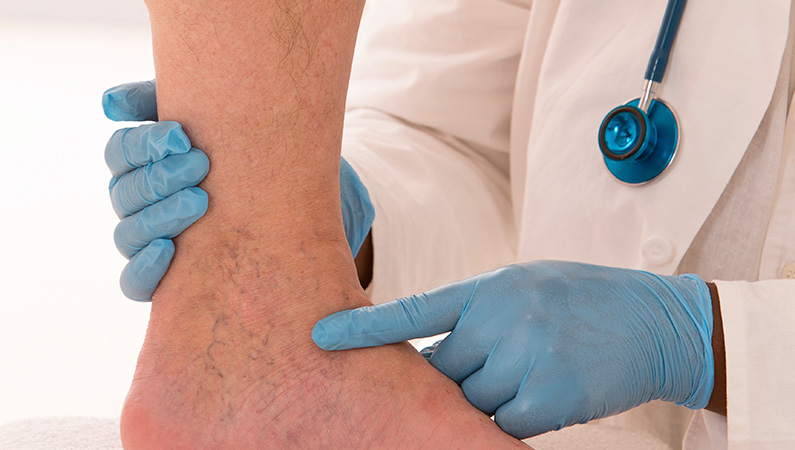Our Springfield Clinic Vascular Surgery team is dedicated to improving lives through expert care for a wide range of vascular conditions. Our vascular surgeons bring decades of experience and a commitment to quality outcomes, working closely with local hospitals, wound care centers and other health care providers to ensure high-quality care for every patient.

Vascular Surgery


Vascular Surgery
About Us
Our Services
Conditions we evaluate and treat:
An aortic aneurysm is a bulge or weakening in the wall of the aorta —the body’s largest artery. If left untreated, it can lead to life-threatening complications.
Our vascular surgery team offers both minimally invasive and traditional surgical options:
Endovascular Aneurysm Repair (EVAR): A minimally invasive procedure that uses a stent graft inserted through a small incision in the groin to reinforce the weakened section of the aorta.
Open Surgical Repair: A more extensive procedure involving an abdominal incision to remove the damaged portion of the aorta and replace it with a graft.
An AV fistula is a surgically created connection between an artery and a vein, typically in the arm. It provides reliable and easy access to high blood flow—essential for patients undergoing dialysis due to advanced kidney disease.
AV fistula creation: A minimally invasive, outpatient procedure to establish this connection, helping ensure effective dialysis treatments.
Fistulagram: A minimally invasive X-ray procedure that identifies issues with blood flow in dialysis access, such as clots or narrowing, to ensure effective hemodialysis treatment.
Carotid artery disease occurs when the arteries that supply blood to the brain become narrowed or blocked, increasing the risk of stroke.
Carotid endarterectomy: A surgical procedure that removes plaque buildup from the carotid arteries to restore healthy blood flow and help prevent stroke.
Transcarotid Artery Revascularization (TCAR): A minimally invasive procedure that improves blood flow in the carotid artery to reduce the risk of stroke by using a small incision in the neck to place a stent and stabilize the artery.
DVT is a condition in which a blood clot forms in a deep vein. If untreated, it can lead to serious complications.
Anticoagulation Therapy: Anticoagulant medications help prevent new clots from forming and reduce the risk of complications.
Thrombolysis: A targeted treatment where medication is injected directly into the clot. A surgeon makes a minimally invasive incision to remove the clot and repair the blood vessel.
Thrombectomy: A minimally invasive procedure to physically remove a blood clot from a vein or artery.
PAD/PVD occurs when arteries or veins outside the heart and brain become narrowed or blocked, reducing blood flow to the limbs. This can cause pain, numbness and increase the risk of serious complications.
Angioplasty: A balloon is inserted into the narrowed artery and inflated to restore blood flow.
Stenting: A tiny metal mesh tube (stent) is placed in the artery to keep it open after angioplasty.
Atherectomy: A specialized device removes plaque buildup from the artery wall.
Bypass Surgery: A new blood vessel is grafted around the blockage to create a new blood flow pathway.
Varicose (Spider) veins are swollen, twisted veins that often appear as blue or purple lines beneath the skin.
Endovenous Laser Ablation (EVLT): Minimally invasive procedures using laser energy to close off problematic veins.
Sclerotherapy/Varithena: A minimally invasive procedure injecting a chemical solution to treat varicose or spider veins.
Stab phlebectomy: A minimally invasive procedure that removes varicose veins through tiny incisions in the skin, improving both the appearance and symptoms of these veins with minimal pain and quick recovery.
